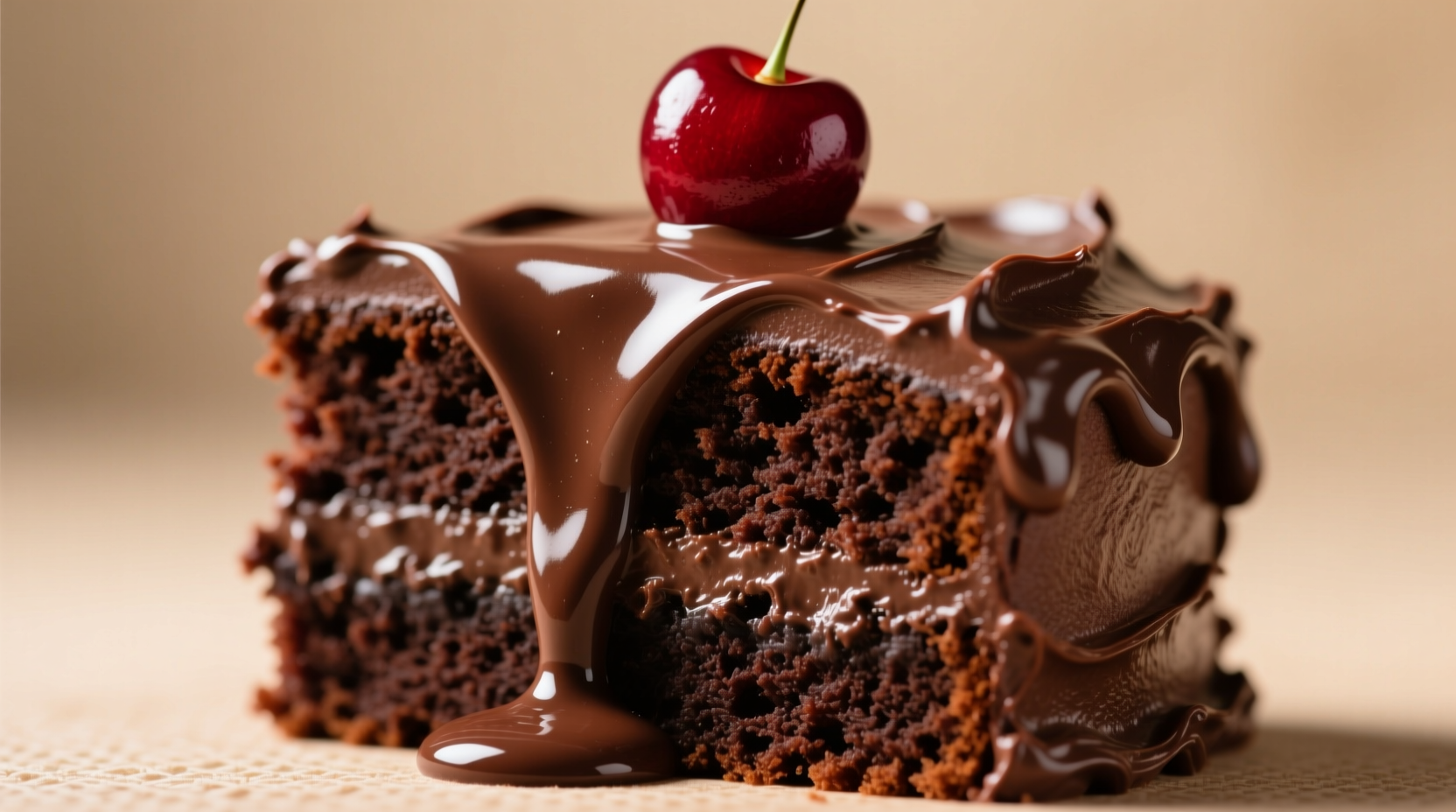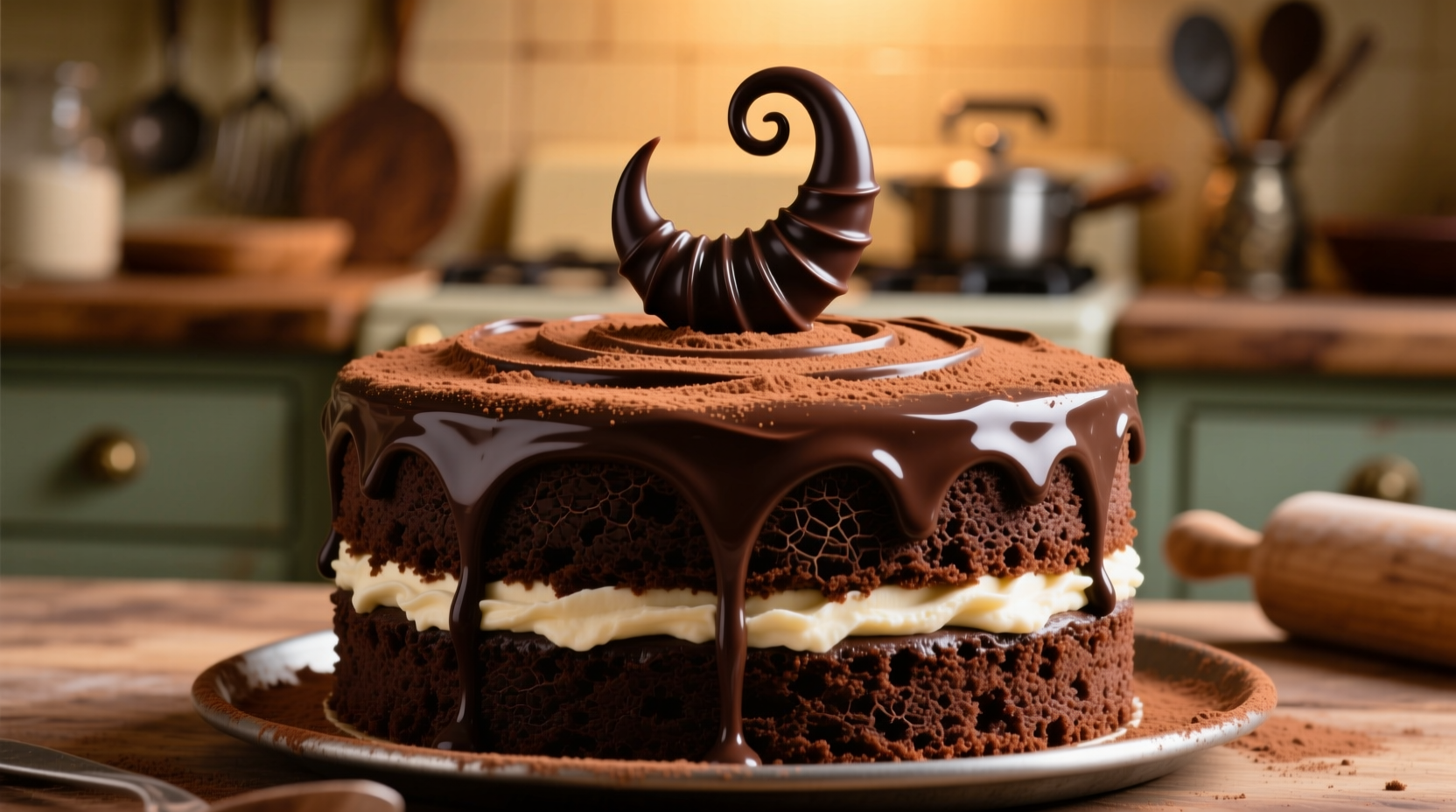Discover everything you need to know about this iconic American dessert—from its mysterious origins to what truly sets it apart from ordinary chocolate cake. By the end of this guide, you'll understand why devil's food cake has remained a beloved classic for over a century and how to identify authentic recipes that deliver that signature deep chocolate experience.
The Defining Characteristics of Devil's Food Cake
Unlike standard chocolate cakes that often rely on melted chocolate, authentic devil's food cake uses unsweetened cocoa powder as its primary chocolate source. The magic happens when alkaline baking soda interacts with the natural acids in cocoa, creating a chemical reaction that:
- Produces a distinctive deep reddish-brown hue
- Creates an exceptionally light, airy crumb structure
- Enhances chocolate flavor intensity
- Maintains moisture longer than traditional chocolate cakes
This scientific interaction explains why substituting Dutch-processed cocoa (which has been treated to neutralize acidity) often yields inferior results—authentic devil's food requires natural cocoa's acidic properties to achieve its signature characteristics.
Evolution Timeline: From Mysterious Origins to Modern Classic
The history of devil's food cake reveals how culinary innovation transformed American baking. Key milestones include:
- Early 1900s: First documented recipes appear in American cookbooks, positioned as the "sinful" counterpart to angel food cake
- 1924: Fannie Farmer's Boston Cooking-School Cook Book features one of the earliest standardized recipes
- 1930s-1940s: Gains popularity during the Great Depression as cocoa was more affordable than chocolate bars
- 1950s: Becomes a staple in American bakeries and home kitchens, often paired with ermine frosting
- Modern Era: Experiences a revival among artisanal bakers focusing on authentic techniques and premium cocoa

Devil's Food vs. Regular Chocolate Cake: Key Differences
| Characteristic | Devil's Food Cake | Regular Chocolate Cake |
|---|---|---|
| Primary Chocolate Source | Natural cocoa powder | Melted chocolate or combination |
| Leavening Agent | Baking soda (reacts with cocoa acidity) | Baking powder (sometimes with soda) |
| Color | Deep reddish-brown | Brown (no reddish undertones) |
| Texture | Lighter, airier crumb | Denser, richer texture |
| Flavor Profile | Sharper, more intense chocolate | Sweeter, milder chocolate |
Essential Ingredients for Authentic Devil's Food Cake
The specific combination of ingredients creates devil's food cake's distinctive profile. Key components include:
- Natural cocoa powder: Must be acidic (not Dutch-processed) to react with baking soda
- Hot water or coffee: Blooms the cocoa and enhances chocolate flavor
- Buttermilk: Adds tanginess that complements the chocolate
- Baking soda: Creates the chemical reaction responsible for texture and color
- Vegetable oil: Contributes to superior moisture retention compared to butter
According to research from the American Spice Trade Association, the precise balance of these ingredients determines whether you achieve authentic devil's food characteristics or simply a standard chocolate cake.
When Devil's Food Cake Shines: Contextual Applications
Understanding where devil's food cake excels helps bakers select the right recipe for specific occasions:
- Layer cakes: Its light texture supports multiple layers without becoming dense
- Cupcakes: Maintains moisture better than standard chocolate cupcakes
- Cake pops: Holds together well due to its crumb structure
- Cake bases for ice cream sandwiches: Provides sturdy yet tender structure
However, devil's food cake isn't ideal for all applications. Its lighter structure makes it less suitable for carved celebration cakes or recipes requiring extremely dense chocolate intensity. As noted by culinary historians at the Food Timeline organization, recognizing these contextual boundaries prevents disappointment when selecting recipes for specific baking projects.
Common Misconceptions and Recipe Pitfalls
Many modern recipes misrepresent true devil's food cake. Watch for these common errors:
- Using Dutch-processed cocoa (neutralizes the essential acid reaction)
- Substituting melted chocolate for cocoa powder
- Adding red food coloring (authentic versions get color naturally from the cocoa-soda reaction)
- Omitting buttermilk (reduces the necessary acidity balance)
These substitutions often create what's mistakenly called "devil's food" but lacks the defining characteristics that distinguish it from regular chocolate cake. True devil's food cake requires precise ingredient chemistry to achieve its signature texture and flavor profile.
Cultural Significance and Enduring Popularity
The name "devil's food" emerged as a deliberate contrast to "angel food" cake, representing the duality of indulgence versus restraint in early 20th century American culture. Food historians note that this naming convention reflected society's complex relationship with rich desserts during a time when dietary restraint was increasingly valued.
Unlike red velvet cake—which shares some visual similarities but has distinct ingredients and origins—devil's food cake maintains its identity through its specific chemical reaction between natural cocoa and baking soda. This scientific distinction explains why the cake has maintained its dedicated following among baking purists despite evolving dessert trends.











 浙公网安备
33010002000092号
浙公网安备
33010002000092号 浙B2-20120091-4
浙B2-20120091-4